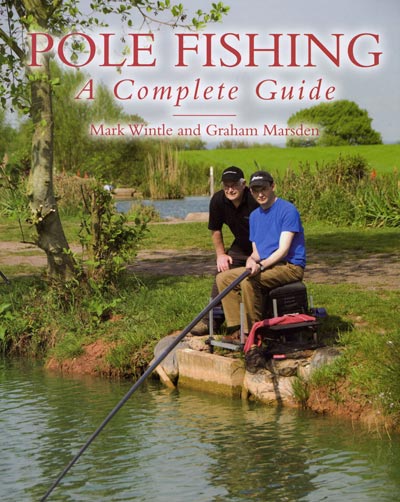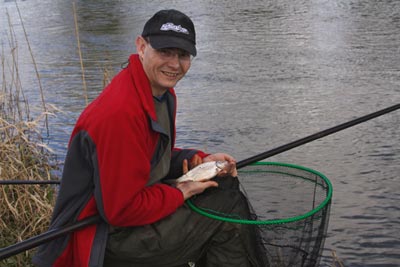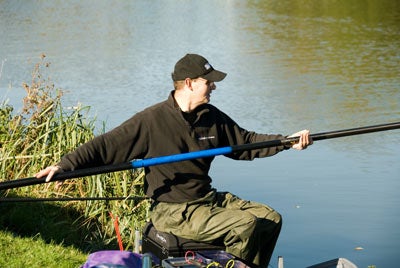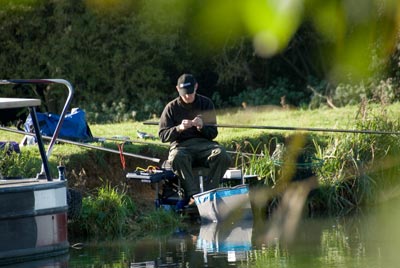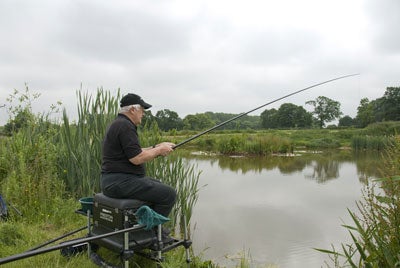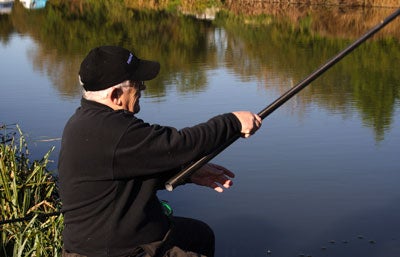Writing a fishing bookIt is probably true that many anglers never buy or read a fishing book, and that of those that do only a small number ever dream of writing one. But what’s really involved in writing a book for publication?
If you are famous enough the publishers will beat a path to your door. Your agent will engage them in bidding wars, and your ghost writer will do the hard work whilst you sit back and reap the rewards. Great for pro footballers but the fishing book world is rarely like that. Do your research and find a suitable publisherTo get a commercially viable fishing book published you must persuade a publisher to accept your proposition. He must be convinced that you can write well and in the appropriate style, that you can supply top quality illustrations, that you can meet deadlines, and finally that the book fills a place in the market that is both a valuable addition to his existing list and a worthwhile prospect. I know of a mullet book written by an already published author that is a good example of a book that filled all the criteria bar one, that there was not a big enough potential market. Put bluntly, despite the fact that it would have made a lovely book, there simply weren’t enough potential buyers.
The fishing book that many experienced anglers would love to publish is a book of their angling reminiscences, exploits and adventures. Unless you are famous these are the hardest of all to get published, and as a degree of vanity is involved, the most likely to succumb to those tempting adverts for unpublished authors. No commercial publisher needs to advertise for authors; they spend most of their time fighting off unsolicited manuscripts. But a vanity publisher needs authors because it is the author that is going to risk their money on the venture whereas the commercial publisher pays the author, often with an advance against future royalties. Therefore, before writing a book you need to do some research. Your local library has books about writing books and getting them published together with the writer’s yearbooks, which list publishers with the type of book they publish, and how many they publish per year. Then you need to plan your book and create a synopsis, a sample chapter and a covering letter, fine tuning it until it is perfect before chancing your arm with your chosen publishers. I learnt most of this the hard way with an earlier book though was astute enough not to go near any vanity publishers.
There is the question of choosing a publisher. Some publishers of fishing books specialise in game fishing, others will publish coarse and game books. Some are interested in biographies and stories; others prefer ‘how-to’ books. Some are happy to publish books with little in the way of illustration, ie, Yates’s ‘How to Fish’, whilst others demand the very highest standards of photography. Some publishers publish one fishing book a year, others several. It is often a question of looking at the books that different publishers have published and trying to determine where your proposed book might fit best. It doesn’t take long to look at current books in print to see who is publishing what. Many publishers have websites making the job even easier. Some examples of current fishing book publishers include Crowood, Merlin Unwin, New Holland, Medlar, Little Egret, Laneman, Boxtree, Swan Hill, and Robert Hale. Will your book make a profit?Seven years ago, buoyed with the pride that came with getting an article published in Waterlog, I wrote a book about roach and roach fishing. I then set about finding a publisher. I found them all right but failed to persuade any to publish my book. I was encouraged by three of them thinking well enough of my writing to take the proposals seriously but ultimately it came down to business – would the book sell well enough to turn a profit? This whole process took about two years with two advantages resulting. Firstly, I got lots of writing practice and learnt to edit my own work, and secondly I gained confidence in dealing with publishers. As an additional bonus, I got to know and talk with a number of angling writers all of whom were very helpful.Then I started writing regularly for FishingMagicFive years ago, I began writing on a regular basis for FishingMagic. With a reasonably free hand to discover my writing skills, and the occasional opportunity to get experimental with fiction and humour (you don’t honestly believe Prof. Bumblebee, John Adams….. et al are real people do you?), my writing skills continued to develop. All the while, the desire to write a book remained undiminished.Just over two years ago, a lively discussion with Graham about how long articles should remain on the front page resulted in me promising to deliver a substantial series on the methods for fishing commercial fisheries. To write it I developed a plan that resembled a book synopsis and set about writing the articles. The Commercials Series was born. By late spring with nearly all the series finished, I discussed the possibility of turning it into a book with Graham. He agreed that it had prospects and that he would like to be involved. I then took one of the articles and expanded it into a sample chapter, re-worked the synopsis and concocted a covering letter. I spent all summer doing this – three months in all – with Graham helping refine it.
By mid September 2006, I was ready to send it to the first publisher on the list, and probably the leading publisher of illustrated fishing books, Crowood, and posted it off before going on holiday for a week. When I arrived back, there was a letter on the mat from the publisher. The gist of this was that they were very interested but wanted the proposed book to have much a tighter focus on pole fishing. Were we still interested? Graham and I jumped at this, and I arranged to meet the publisher one afternoon the following week. I put together a new synopsis and took some sample photographs. The meeting went very well and within a month, we had a contract to deliver the book by the end of June 2007 with number of words and photos agreed. Then it was hard workIt was then a case of a lot of hard work, arranging some photo shoots, trying to figure out what shots we needed, and roughing the drawings for the illustrator. Often we thought we’d got the shot we wanted in the bag only to find that we hadn’t but eventually we got there. The final two weekends were incredibly tiring in that I put in 25 hours effort per weekend to finalise the photos. Fortunately by then the text had long been edited and refined by Graham (I did the vast bulk of the writing). For book quality photos all were shot in RAW and converted to TIFFs with digital SLRs. We found we needed good lenses and specialist lenses (macro, telephoto) too at times. All shots must be as sharp as possible, well composed and well lit. A proper flashgun was essential, the ones built into the cameras just not being good enough. We had to decide where each photo would be best placed and show it in the text.Once we had handed over the completed manuscript together with the photographs and rough drawings, it was not long before we got news that the initial edit was complete with no problems, and the work with the illustrator began. A few weeks later, we got the design proofs from the design company and started proof reading, which turned up a surprising number of glitches as well as helped put the finishing touches to the book. This completed in November. Then it was a case of being patient before finally getting our hands on copies of the finished book in early February. It is a very satisfying moment to finally see a book with your name on the cover. Our job was not finished as we had to assist the publisher in identifying appropriate reviewers. More from GrahamI started writing my first fishing book, ‘Advanced Coarse Fishing’ (Adam and Charles Black) in the late 1970’s and it was published in 1980. At that time, unlike today, you could write a book and then tout it round the likely publishers until, you hoped, you found one that was prepared to publish it. Today, as Mark said, you need to write a synopsis and a sample chapter, rather than a whole manuscript, and send that off. I was lucky with ‘Advanced Coarse Fishing’ as it was accepted by the first publisher it was sent to. But they must have known something I didn’t as the book subsequently went to three editions in both hardback and paperback and sold very well indeed.
Since then I’ve written three more books and contributed to scores of others, all of which were commissioned by the publishers or editors. More emphasis on photographsAnother big difference in writing books today is that, like the magazines, there is much, much more emphasis on photographs. One of the reasons for this is that it is so much cheaper for the publisher to get the book printed, most of them using far east printers. Plenty of pictures is what the reader expects these days too, and why not; there is no greater truth than that a picture can be worth a thousand words. And that suits me fine, for photography is my second hobby and I really enjoyed doing the photography for the pole book. It’s so much more rewarding taking pictures with a purpose and for publication.Can you keep it up?One thing that hasn’t changed where writing fishing books is concerned, is that it helps enormously if you already have a portfolio of articles written for the angling press (and angling websites today), and especially if you have already made something of a name for yourself, that you can show to a book publisher. One thing that concerns a publisher is if you can produce the work to the standard he expects. Yes, you may have written an excellent synopsis and sample chapter, but can you keep up that standard for at least another 60,000 words? Can you produce 200 or more top quality colour photographs?Of course, I’m referring to a publisher, like Crowood, who have published our pole book, whose books are sold in all the top book outlets, one who can demand a certain quality and who insists on specific standards regarding text and pictures. The contract and other documentation spelling this out goes to about 20 pages, with instructions on style, body text, headings, sub headings, presentation, captions, copyright and so on. The photographs have to be TIFFS, which are about 30mb each, with no cropping and no other editing – in other words, other than converting them from RAW files to TIFFS, they have to come straight from the camera. They will do any of the photo editing that may be required.
You then sign a contract to agree that you will send a disk of sample images by a certain date, the completed manuscript by another date, to complete proof checking by yet another date, and that the publication date will be yet another specific date. It’s all very strict and very efficient and designed to keep you on your toes. The author(s) is paid 10% of the cover price in advanced royalties. It comes in three chunks, the first on signing of the contract, the second on delivery of manuscript and the final one on publication of the book (that’s the standard payment method for most books). Then you hope it sells well, that the advanced royalties are recovered quickly and that future royalties continue to come in. Self-publishing or vanity publishingOf course, publishing a fishing book need not be as strict or demanding as that (or more strict if you wish). You could decide to self-publish, where you set your own number of words and pictures in any style you like, and then risk your own money by paying for illustrations, printing, advertising and distribution. The cover price is usually more expensive, in order to cover all your costs and that alone cuts the sales. You take all the risks but if the book is a good seller you also reap all the rewards. It isn’t a risk I’ve ever been prepared to take; not because I’ve believed my books wouldn’t sell, but because I know an established and respected book publisher knows the market much better than I do, and if he turns down my potential book it’s because he suspects there is no money to be made from it.That’s always the one thing to remember: book publishers are in business to make a profit, they don’t turn down a prospective book they think will sell well and make a profit for them. They only turn down books that don’t fit their market or are considered too great a risk. So ask yourself, do you want to risk losing money? Or are you prepared to take the risk for the pleasure of seeing your book published, even though it could cost you rather than make a bob or two? |
Welcome!Log into your account










